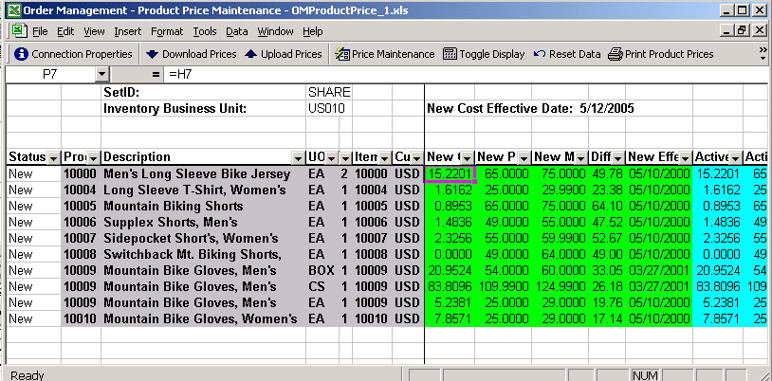Your online store’s foundation is its product database, which contains all the information you need to market, sell, and distribute your goods online and run your business. Business success depends on building an optimal database that centralizes your product information across all of your catalogs.
This is simple to accomplish with a product information management system (PIM), enabling you to develop and maintain the best product catalogs across all of your selling channels. In turn, this improves the product experience, strengthens the positioning of your brand, and boosts sales.
What type of product database you want to build and how you want your data arranged are two of the first things to think about. There are three main categories of product databases to take into account.
No matter which of these three approaches you choose to employ to store and manage your product data, there are a few crucial components involved in building your database. Which are:
- Product information
- Structure and hierarchy rules (categories, subcategories, families, variants)
- Related materials (digital assets, resources, links)
- Editing and management software
- Connectors for your online store
Some of the methods also allow for the inclusion of operational data, for inventory, orders, and customer data.
Relational database
One of the most traditional methods of data management, a relational database comprises a set of spreadsheets containing related information. For example, one sheet can be used for your customer database information, while another is for your order database.
One of the most common examples of creating a relational product database is by using Excel, the world-famous software that made data management digital. Setting formulae and rules within your Excel database allows you to ensure changes are automatically made to other tables and spreadsheets.
However, like many tools before it, Excel is now outdated in some of its ways, with limitations that can slow your processes down.

Non-relational or key-value database:
This format of an e-commerce product database involves a directory that groups data (values) into a number of folder types (keys). This allows you to group together data for different departments, such as customer support, sales and marketing.
While keys can be anything relevant to your business, common keys include “products”, “orders”, and “customers”.
This type of database is highly partitionable, enabling your team to scale horizontally to a degree that a relational database can’t.
Cloud product database
The most intuitive and seamless product database to use, this format organizes and stores your product data centrally in the Cloud.
If you have previously used another type of product database, it’s quick and easy to switch to a cloud database. Product information management software acts as a cloud database for your product data. At Sales Layer, the PIM allows you to convert thousands of spreadsheets to one centralized hub. You can then synchronize your data across your selling platforms via API or one of our plug-and-play connectors.
Read Also: How to Shop Online in a Different Country?
The PIM allows you to:
- Import all your documents and files (such as Excel and CSV)
- Edit and manage product pages more intuitively
- Coordinate thousands of variants, fields and tables
- Decide with one click what you want to make public, share, export, or connect to other channels, marketplaces or software systems.
How to create an e-commerce product database?
A shopping cart database should be highly available, fault-tolerant, and highly responsive to provide customers with a smooth shopping experience 24/7. When designing a shopping cart database, it can be divided into three main components for better categorization and understanding of the underlying data structure:
- Static Data
- Session Data
- Processed Data
Static Data
This component will include somewhat static data that the customer needs only to retrieve while interacting with a shopping cart. The data is stored in the following types of tables:
producttablediscounttableusertable
Session Data
This is the most important component of the shopping cart database where all the live interactions (session details) are stored when the client is interacting with the shopping cart.
shopping_sessiontablecart_itemtable
Processed Data
Once the customer completes a transaction, we need to permanently store the order information by moving the Session Data into permanent storage. Additionally, we need to store the payment details.
order_detailstableorder_itemstablepayment_detailstable
Compile your data
The first step of creating a product database is to identify and consolidate the main types of product information you have and the tables you want to use for organizing them. It’s important to consider which columns to include in your table, as well as if they will need to relate to other tables.
Define your structure
Once you have compiled and collated all of the relevant data for your product catalog database, you’ll need to decide on a structure that makes sense for your operations.
The typical structure of an online product database assigns the following:
- Families and subfamilies
- Categories and subcategories
- Product attributes: These are what distinguishes each of the products (color, size, weight, strength, etc.).
- Variants: Indicating when a given product is available in different variants (size, color, material, composition, etc).
Store your database in an efficient system
You might find that your product database comprises a number of spreadsheets, in which case it’s important to maintain a secure system to easily locate them and keep multiple backups.
However by opting for a cloud system such as a SaaS PIM platform, you can upload thousands of spreadsheets into one centralized product database for your online store. This allows you to edit, optimize and automate product catalogs in bulk, with all data easily accessible and safely secured in the cloud.
For both B2C and B2B companies, centralizing your data to build a product database within PIM has many advantages.
First of all, by using this strategy, you can guarantee consistency across all sales channels and guarantee that your clients will always receive information of the same caliber regardless of the point of contact.
Second, you may guarantee accurate data across all departments by building a product database that can serve as your company’s “single source of truth.” Every team will have access to the most recent version of the content, eliminating the confusion that would otherwise be caused by obsolete spreadsheets floating about the company. You can ensure that everyone is using the same hymnal by using our new product database for your online business.


